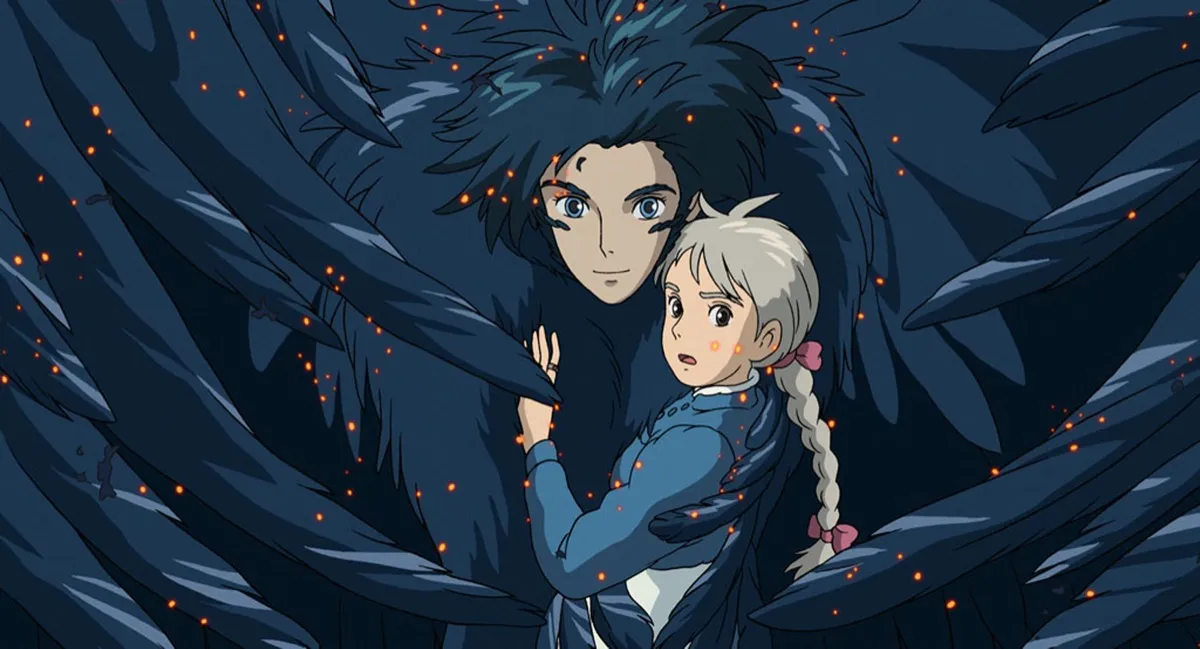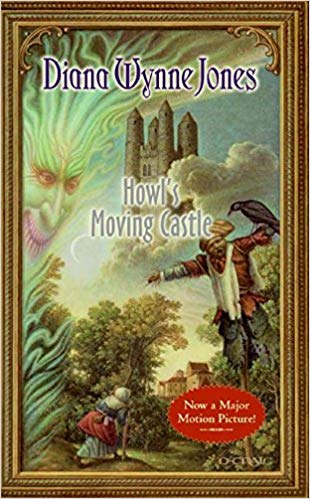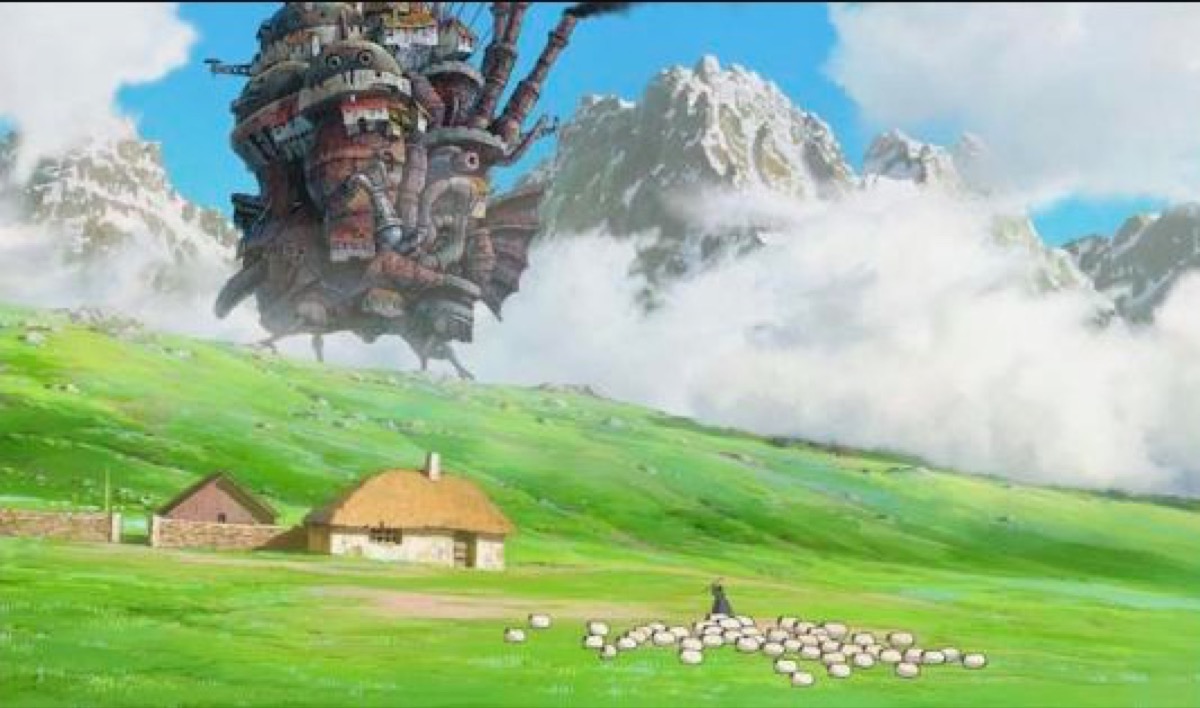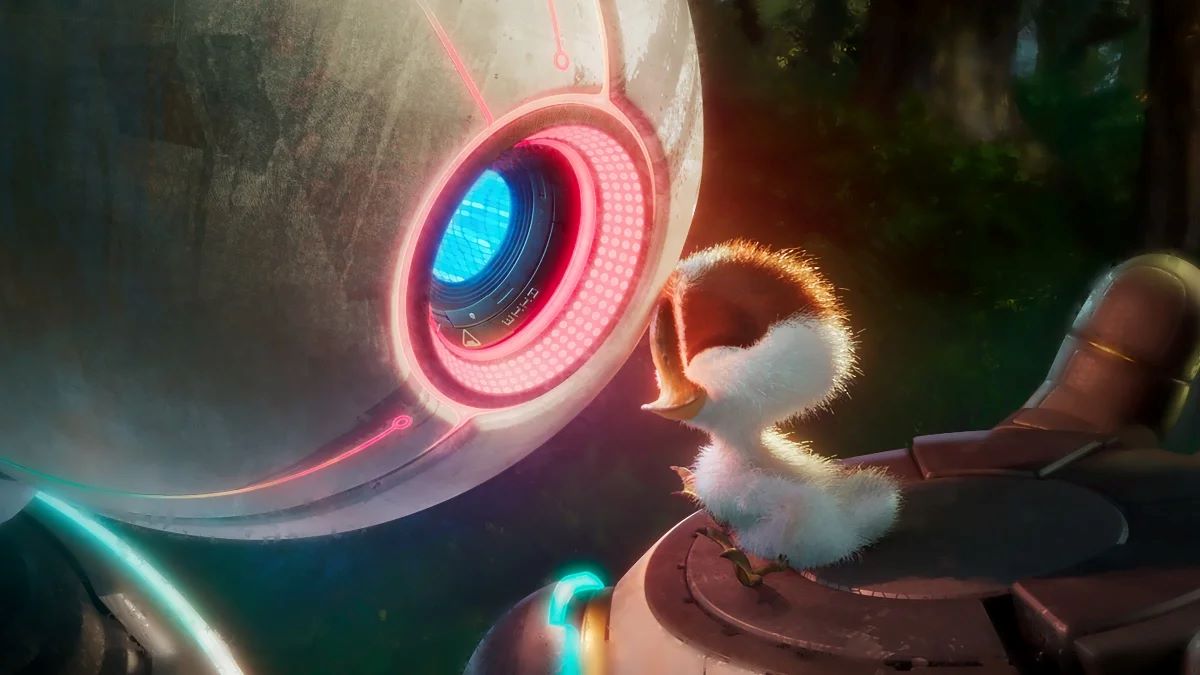The clumping and rumbling of a steampunk-looking castle, a ridiculously dashing Howl whisking young Sophie high above the town houses in a dance, young Markl transforming himself into an old man, and the walking—but not talking—scarecrow who helps old Sophie with the laundry. For those who have seen Studio Ghibli’s Howl’s Moving Castle, these scenes are easy to call to mind, but funnily enough, they’re not in the book.
Yes, it’s true. Before Hayao Miyazaki brought to life arguably one of his most colorful and delightfully romantic animated films, Howl’s Moving Castle was a book written by an English woman named Diana Wynne Jones. The book was published in 1986 and, if you can believe it, is filled with even more romance and humor than Miyazaki’s 2005 adaptation—not to mention that the book has two sequels!
As a longtime Ghibli fan who fell in love at first sight with Howl and Sophie’s love story—or maybe just Howl—this was pretty amazing news for me. But with the book having been on library shelves almost 20 years before Studio Ghibli got their hands on the story, it was equally baffling that I never knew this book even existed, let alone that the story continued on for two additional books.
Though Studio Ghibli did help bring the story of Howl’s Moving Castle to a wider audience, neither Jones, nor her book, is mentioned in the film’s credits or the trailer. In addition, Jones—who passed away back in 2011—was not even known for her story of Howl and Sophie.
Instead, the children’s fiction and fantasy writer became popular for The Chrestomanci Chronicles, which follow the multi-parallel universe adventures of magical family members Christopher and Cat. For many years, much to my dismay, the book Howl’s Moving Castle has lived in the shadows of Jones’ more well-known series—plus I, and likely many fans, always unquestionably associated the story with Miyazaki’s usual creative brilliance.
Still, it can’t be argued that, when Miyazaki brought Howl’s Moving Castle to the big screen, it was the beginning of the book’s return to the spotlight. Jones’ novel won the Phoenix Award for best children’s book in 2006, a year after the film’s premiere, when book sales for Howl’s Moving Castle far exceeded when it first released. After all, 1.5 hours of Howl is simply not enough—far better to have 429 pages.
“Up until then, the Chrestomanci books had all the attention and, oddly enough, there’s never been any kind of movie of them,” said Jones during an interview with Publishers Weekly back in 2008. “Now the Howl books are being sought for all over the world, so that’s nice. And the procession of people, which was enormous already, has increased—doubled and tripled—of all the people who want to marry Howl.”
Thankfully, Howl’s long hair, devilish charm, twinkling earring and “glass-green eyes,” as Sophie calls them in the book, are all true to the original story—as is young Sophie’s “mousy” timidness, before she is visited in her family’s hat shop by the Witch of the Waste and turned into a spunky, need-to-clean, 90-year-old woman. The idea for Sophie’s transformative characters was actually born out of Dianna’s newly discovered, and very severe, milk allergy in 1984. She mysteriously almost lost the use of her legs and had to walk with a stick.
The book’s overall story is like the movie—after being turned into an old woman, Sophie runs away from home and unexpectedly finds herself as a cleaning lady in the wizard Howl’s moving castle. Working with Calcifer, the castle’s loud-mouthed fire demon, Sophie tries to find a way to break her curse, as well as release the womanizing Howl from an ancient spell he seems to be enslaved to.
Of course, as with most books made into films, there are also some differences. For example, the nameless town in the film is actually called Ingary, and the source material Sophie is the oldest of not two, but three sisters, the two younger siblings being named Martha and Lettie. At one point in the book, Howl falls for Lettie, who turns out to actually be Martha in disguise. Ghibli’s “Markl” is actually named “Michael” in the book and is a tall, dark, and handsome young man, rather than the small, adolescent redhead in Miyazaki’s adaptation.
Calcifer, while his mannerisms are the same, is described as looking a lot more like a demon in the book, being made of wild blue flames, with green flames for hair and red flames for eyes.
Jones, of course, saw the film’s premiere and said in a post-film interview that her favorite scenes were of the shooting stars, where the castle falls to bits and pieces and, of course, her beloved Calcifer.
“I thought the fire demon Calcifer was wonderful,” said Jones in the interview, who described Miyazaki’s film as “rich and strange.” She added, “He wasn’t as I portrayed him in the book, but he was wonderful.”
Howl’s moving castle itself is also very different in the book, being described as “tall and thin and heavy and ugly and very sinister indeed.” Whereas Miyazaki’s castle looks more like a discombobulated misfit toy—much more colorful and lovable.
Jones said, in the same interview, that she saw Miyazaki’s pictures first, before she saw the film, and thought, “This isn’t the castle I wrote. But what I liked about it was that it had its own distinct and often quite threatening personality. My castle was tall and thin and made of blocks of probably coal … Miyazaki has translated this into a thing of fantasy.”
But perhaps the most surprising difference, without giving away too many spoilers, is that the relationship between Howl and Sophie, for a majority of the book, is very volatile. They really can’t stand to be around each other, and it makes for a comedic narrative. In Miyazaki’s film, Sophie is quite taken with Howl from the get-go, and Howl is very quick to put the charms on her, revealing right away that he knows she is under a spell. This isn’t so much the case in the book.
Sophie’s being under a spell is only known by Calcifer for a majority of the story, and Howl and Sophie are very much at each other’s throats, between Sophie’s incessant cleaning and Howl’s constant chasing after girls who aren’t Sophie. Of course, their affection grows, as it does in the film, but there’s plenty more outbursts to be enjoyed in Jones’ novel, with the additions of brand new characters and wizardly adventures, none of which are seen at all in the film.
On the inside of the book, there’s also a dedication that reads, “This one is for Stephen,” and goes on to explain that Jones began writing Howl’s Moving Castle after the idea was suggested to her by a young boy at a school she was visiting. He asked her to write a book called “The Moving Castle,” and the story was born. But Jones has her own strong connections with the story, being the oldest of two sisters herself, her own allergy ailments kick-starting the creation of Sophie, and one of her “more formidable” aunts being the model for the Witch of the Waste.
Perhaps that’s why Jones decided that one book about Howl and Sophie wasn’t enough, going on to write two sequels to Howl’s Moving Castle. Castle in the Air (Howl’s Moving Castle 2) takes place a year after Howl and Sophie’s initial story and focuses on the lands far to the south of Ingary, where a young carpet dealer named Abdullah meets and falls in love with a princess. When the princess is kidnapped, Abdullah flies on his magic carpet to save her, but not before Howl and Sophie get caught in the mess.
In 2008, Jones also published House of Many Ways (Howl’s Moving Castle 3), which tells the story of the heroine Charmain Baker, who, while looking after her great uncle’s cottage, discovers the house can bend space and time and meets a number of magical friends in various magical worlds. One of those worlds is the Royal Mansion, where a king and his daughter are in a desperate search for a legendary “Elfgift.” It’s not long until a certain sorceress, Sophie, is called upon to help, with Howl and Calcifer in tow.
Despite the differences between Jones’ Howl’s Moving Castle and Miyazaki’s film adaptation, Jones says that it was because of the film that the story was given a new life and a new fan base.
“[Miyazaki] understood my books in a way nobody else has ever done,” said Jones in an interview about the film. “If you love someone enough, all sorts of extraordinary things happen in your surroundings as well, and you can achieve great things even if the world falls to pieces around you … It is, if you like, a sort of form of Wizardry.”
(featured image: Studio Ghibli)
Victoria Davis is a freelance journalist for The Mary Sue and other publications across the U.S. such as Isthmus, Capital Times, SDNews and Hidden Remote. An “Otaku” girl through-and-through, Victoria loves all things arts and entertainment. She has a particular affinity for anime and film, spending most of her free time at the movies or with her nose in a manga.
The Mary Sue may earn an affiliate commission on products purchased through links.
Want more stories like this? Become a subscriber and support the site!
—The Mary Sue has a strict comment policy that forbids, but is not limited to, personal insults toward anyone, hate speech, and trolling.—











Published: Sep 19, 2019 03:02 pm